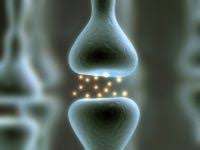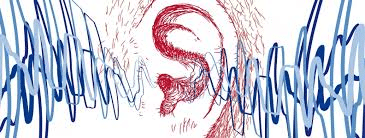Hidden hearing loss, also known as “cochlear synaptopathy”, is a phrase used to refer to neural dysfunction where there is still good cochlear (or sensory) function. It is the sensory function that typically yields the measurement of hearing sensitivity on an audiogram or hearing test. People with normal cochlear function would have a normal audiogram but may report that they have limited speech understanding in noisier social situations.
It is “hidden” in the sense that on standard audiology tests, everything appears to be normal, despite complaints from the clients.
Part of this stems from the limitations of standard audiology tests. It is not a normal clinical procedure to perform neurological testing such as ABR or other evoked response measures, unless there are more significant complaints. Even in the case of an asymmetry between the ears, only an MRI is performed, rather than looking for other neurological difficulties. In the case of “cochlear synaptopathy”, it is the synapse between the inner hair cells in the cochlea and the VIIIth auditory nerve that is part of the problem. This is not something that can be picked up on MRIs or CT scans.
Traditionally we have referred to hearing loss from sources such as noise exposure, music exposure, and aging (presbycusis), as “sensori-neural” hearing losses. This suggests some vagueness. We don’t really know whether the hearing loss is sensory or whether it is neural. It is assumed that it is one or the other or both, and for most purposes, this is fine. A sensori-neural type of hearing loss is generally not medically treatable in any event, and many require some form of rehabilitation such as hearing aid amplification.
This is further exacerbated by the fact that there are two types of inner hair cell nerve endings- those nerve fibers that respond for soft sounds (and these provide hearing threshold information on audiograms) and those that only respond for higher level sounds such as speech and music. One can have a dysfunction of only the higher threshold nerve fibers with intact lower threshold nerve fibers. The audiogram would be normal but there would be some hearing dysfunction for higher level sounds.
The phrase “cochlear synaptopathy” has another problem. Audiology programs need to add an entire year of study for their students just to learn how to pronounce it!
We are just now scratching the surface of hidden hearing loss. ost of the studies have been performed on animals and while they are good models for study, they are not humans. Since 2011 there have been some post-mortem studies on human temporal bones demonstrating that, at least in these cases, there is some synaptic pathology but normal cochlear sensory anatomy. This suggests that cochlear synaptopathy does indeed occur in humans, but its prevalence is not known.
And we don’t have any reliable neurological measures. Much has been written about looking at the various amplitudes of some neurological measures such as ABR (wave I/wave V ratios), or even the ratio of the SP/AP, but each of these approaches have some limitations.
Finally, what do we do about it?
There are no therapies that can re-establish synaptic function (despite what Star Trek fans may believe). Perhaps, hearing aids or other assistive listening devices that can provide slight high frequency amplification in hopes of improving the signal to noise ratio may be useful, but at this point, we are not sure.
Cochlear synaptopathy is hard to pronounce, hard to assess, and its prevalence is not well defined.









Actually, there are two sites of lesion: Cochlear synaptopathy, which is a misfiring of the synapses, and also spiral ganglion neurodegeneration; but in either case, it falls into the auditory neuropathy spectrum disorder (ANSD) spectrum; which pretty much in any case, is in the auditory dys-synchrony portion of the “spectrum.”
Basically, it causes lag-only cyclic phase jitter of the neural firing; but almost always not to the point where it can be detected with either an ECochG or ABR wave I.
Search “cochlear synaptopathy” in The Hearing Blog for a complete explanation, with heavy references of Sharon Kujawa & Arnold Starr.
EDIT: ABR wave I is the action potential as measured by the ECochG.